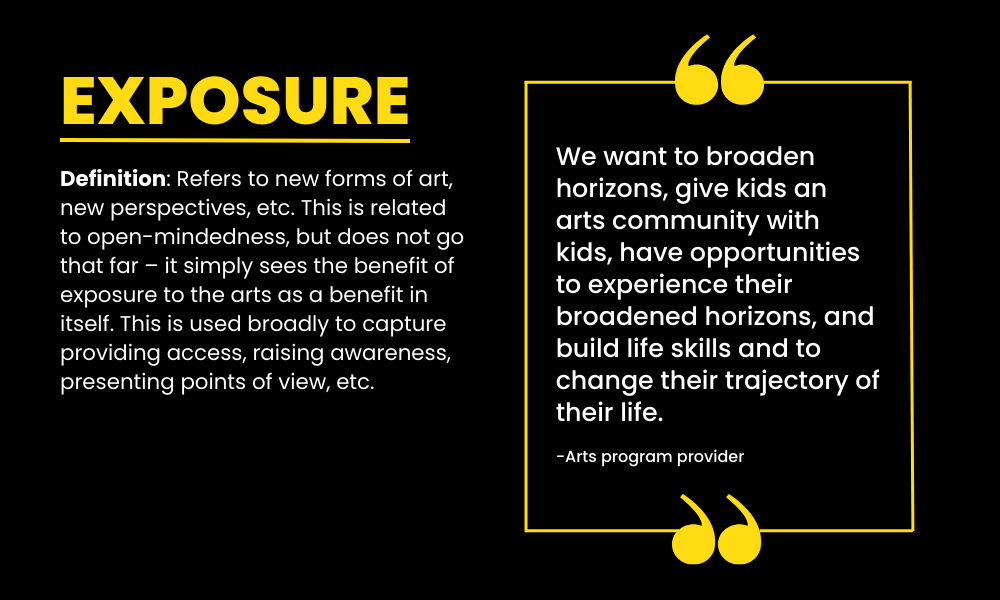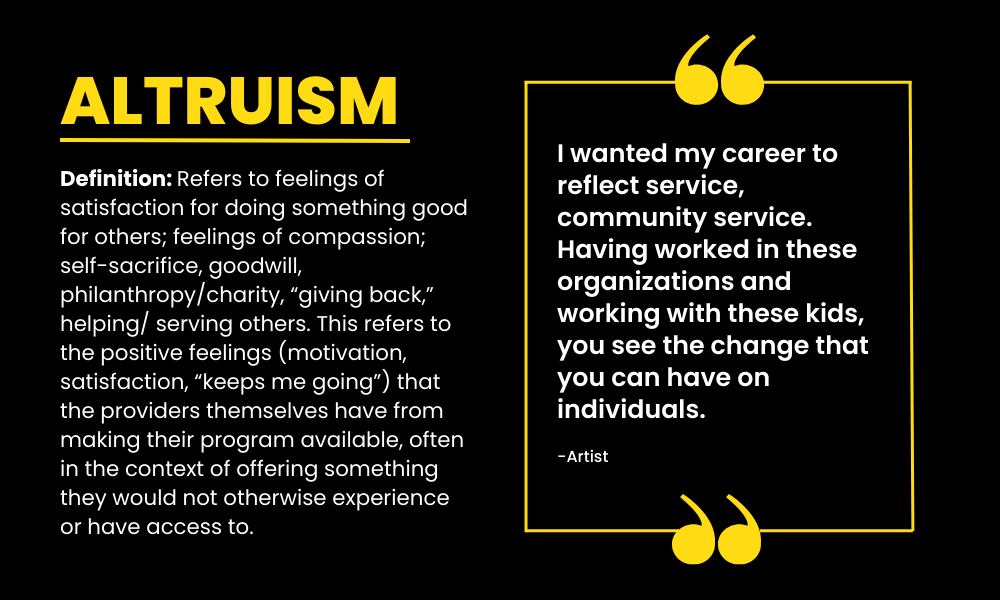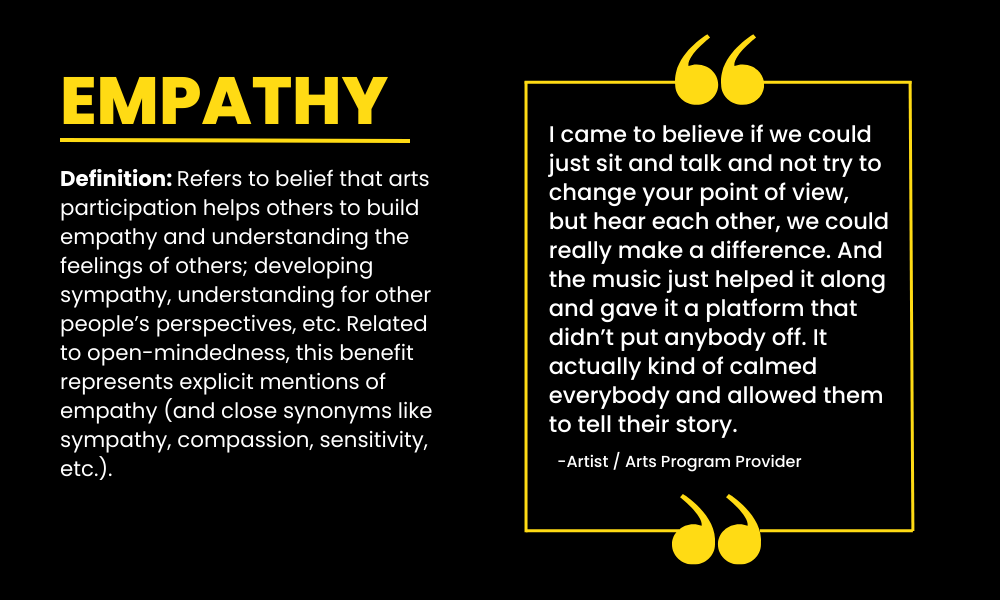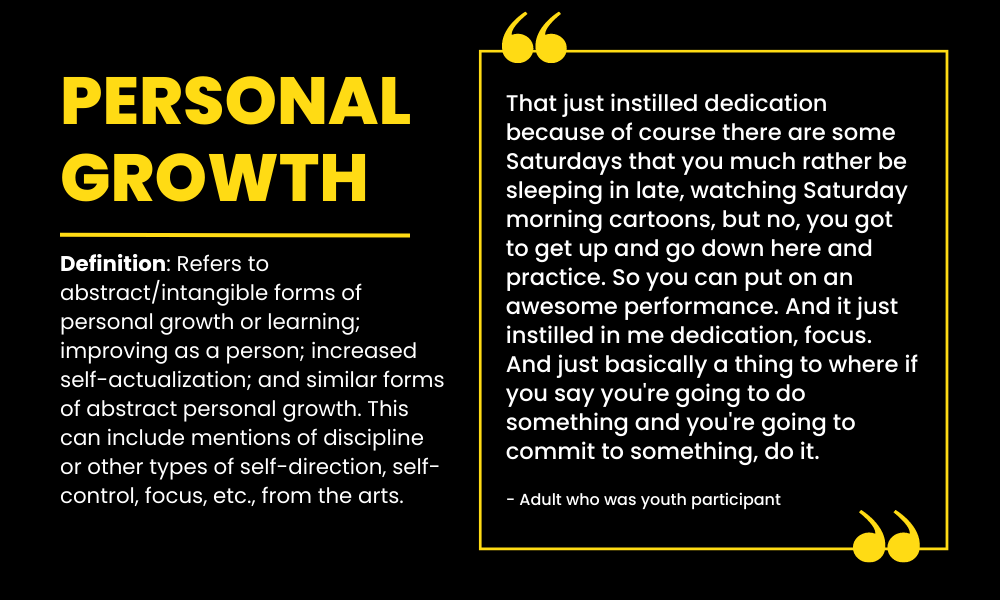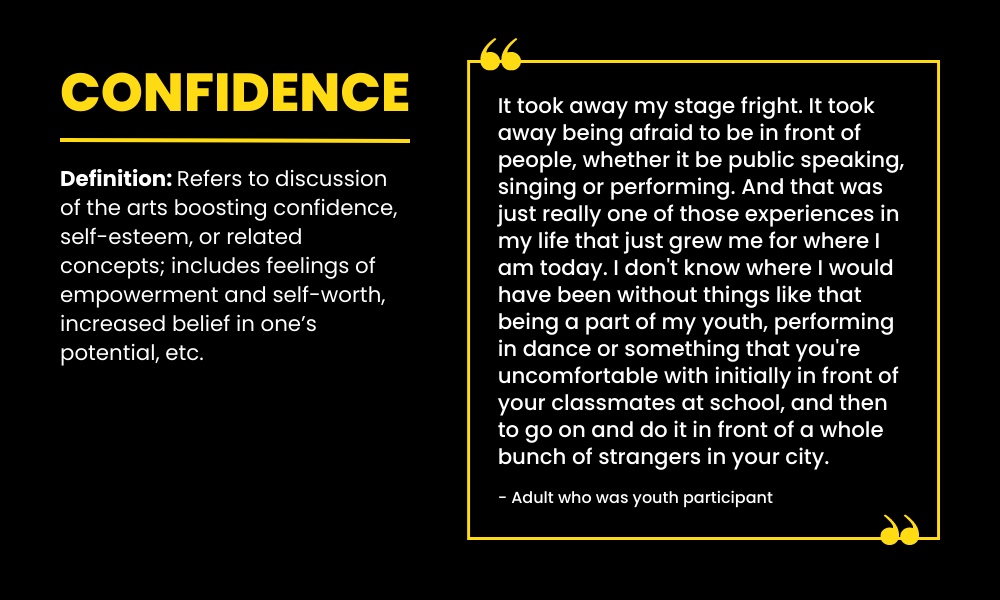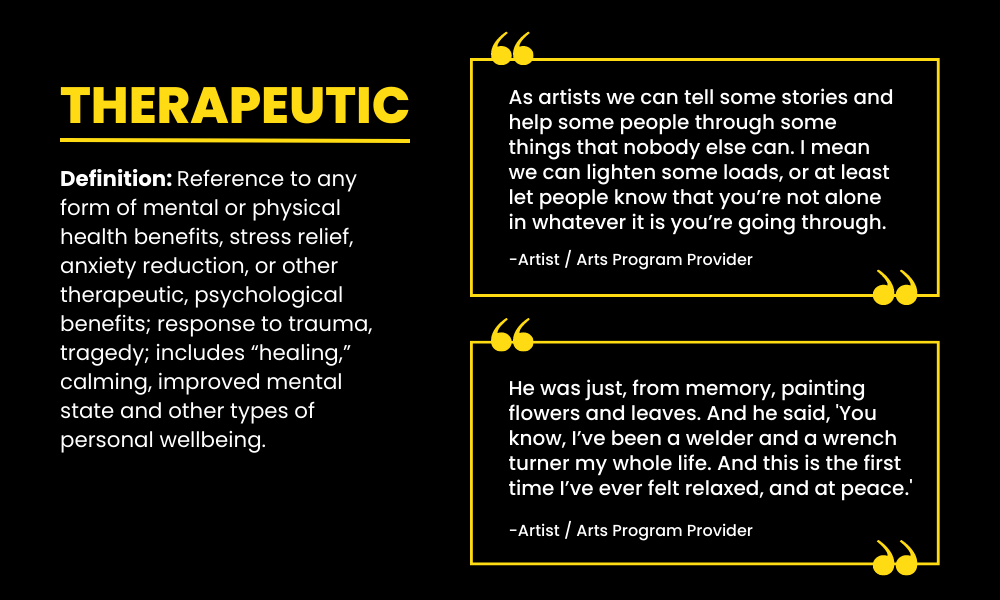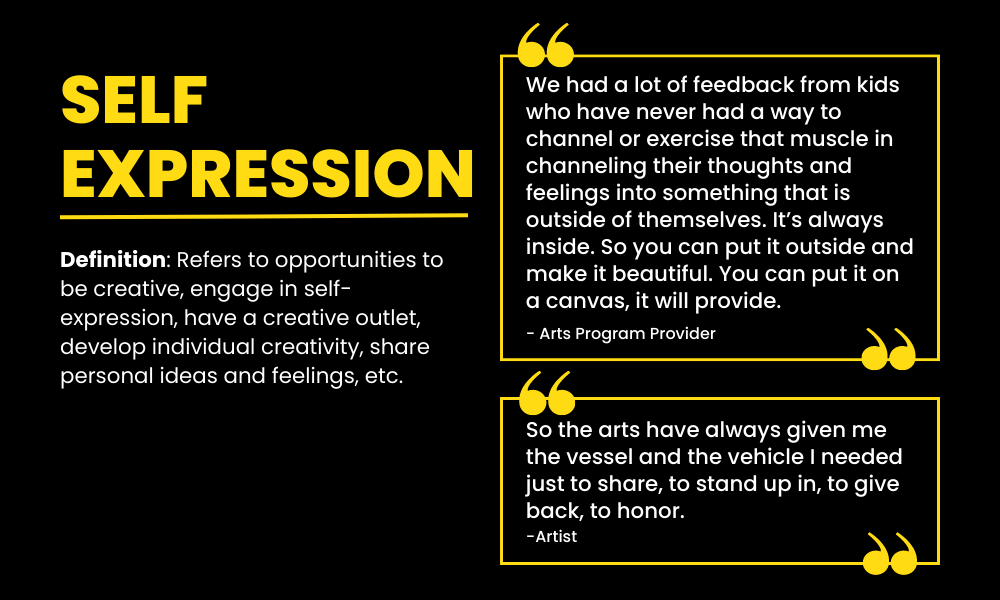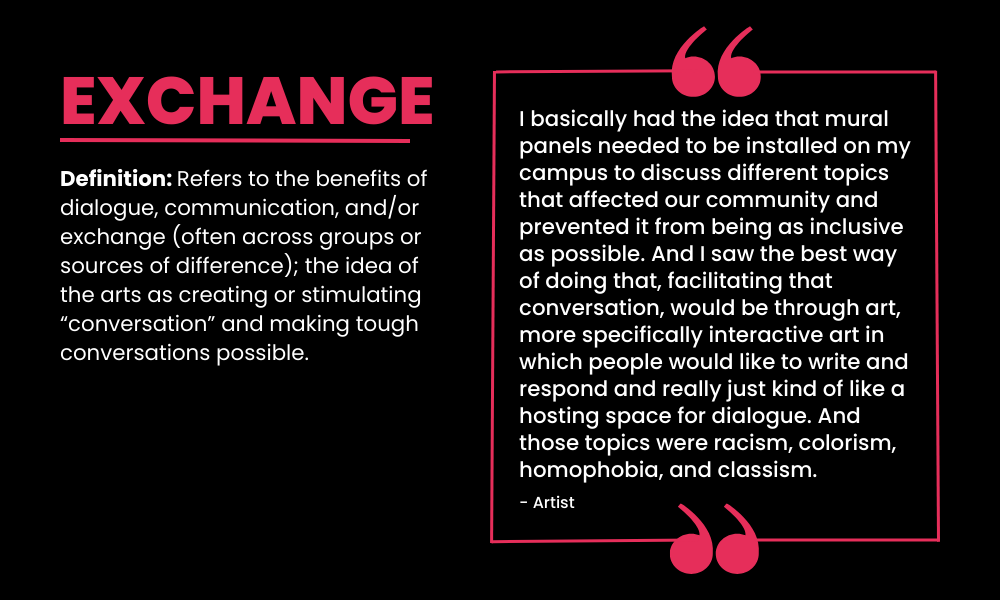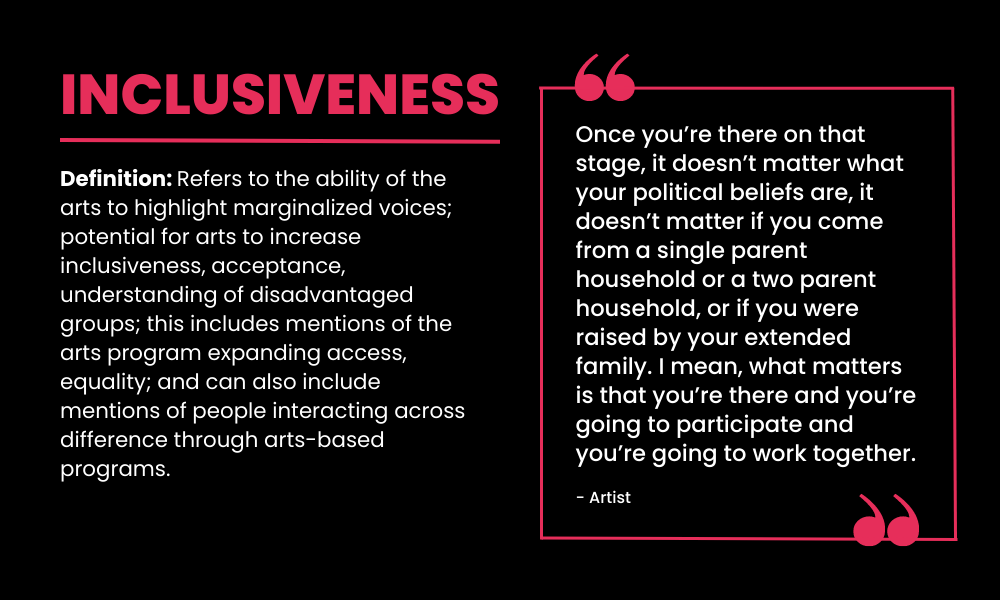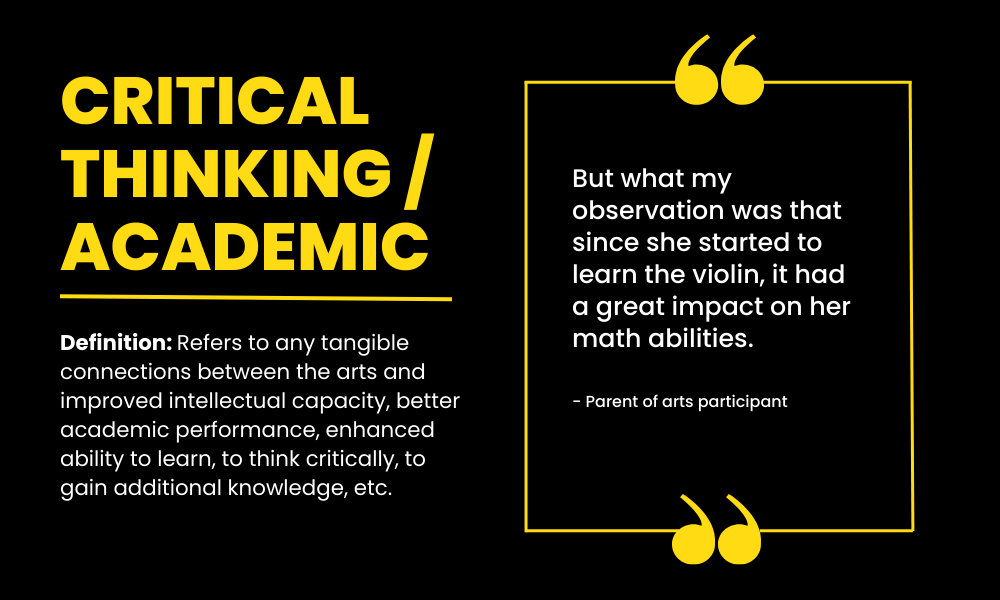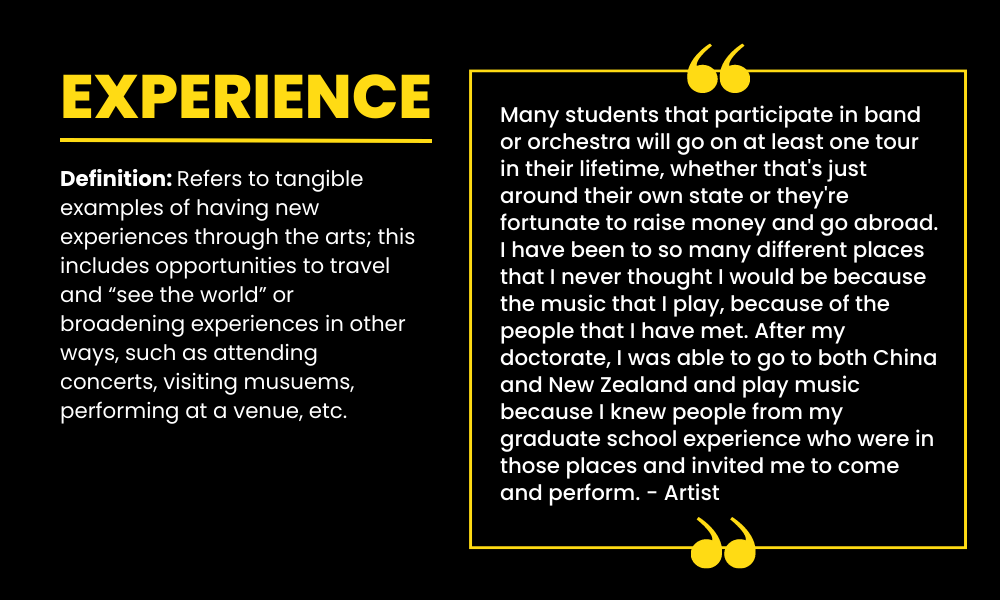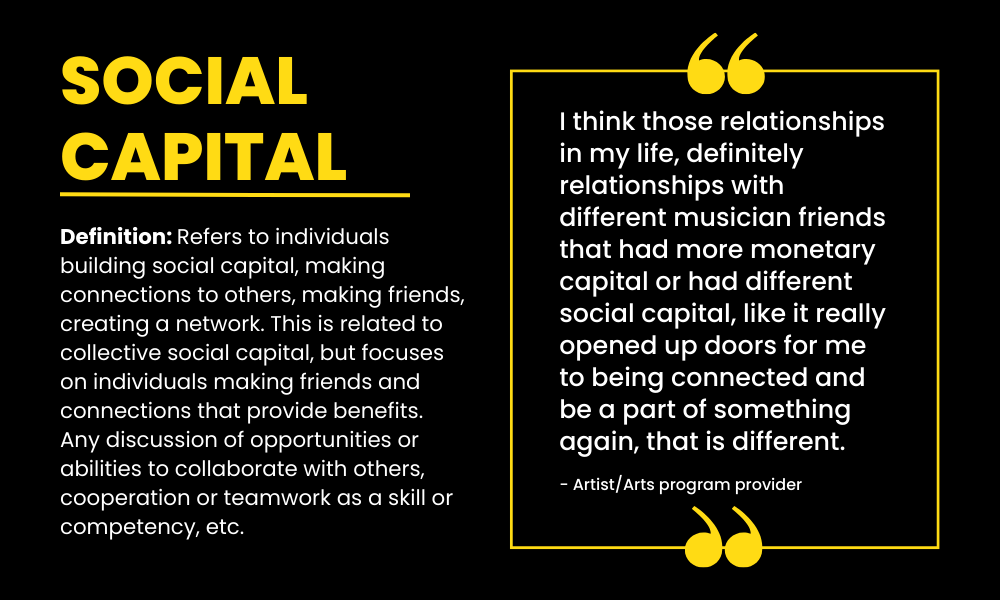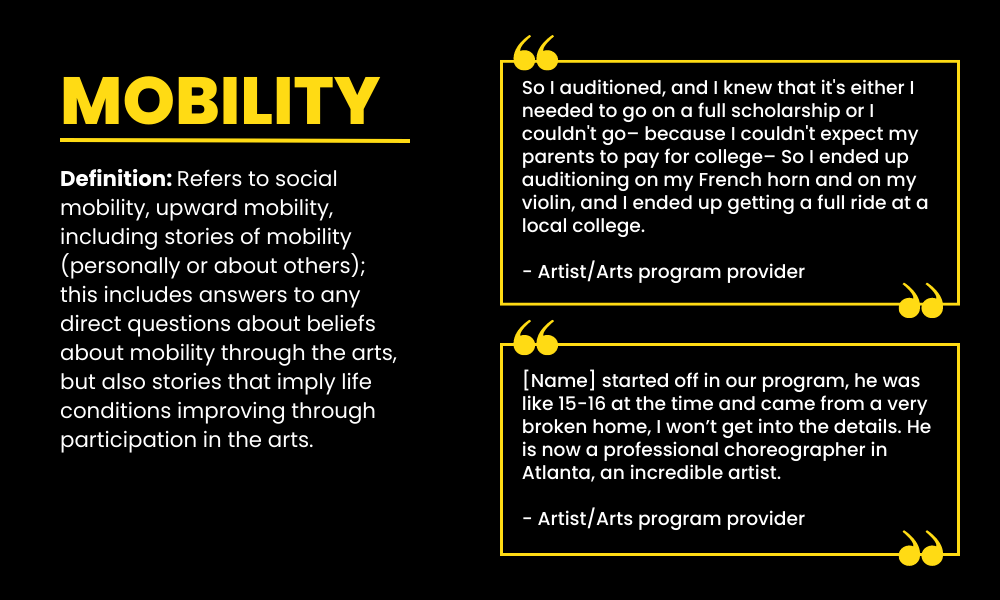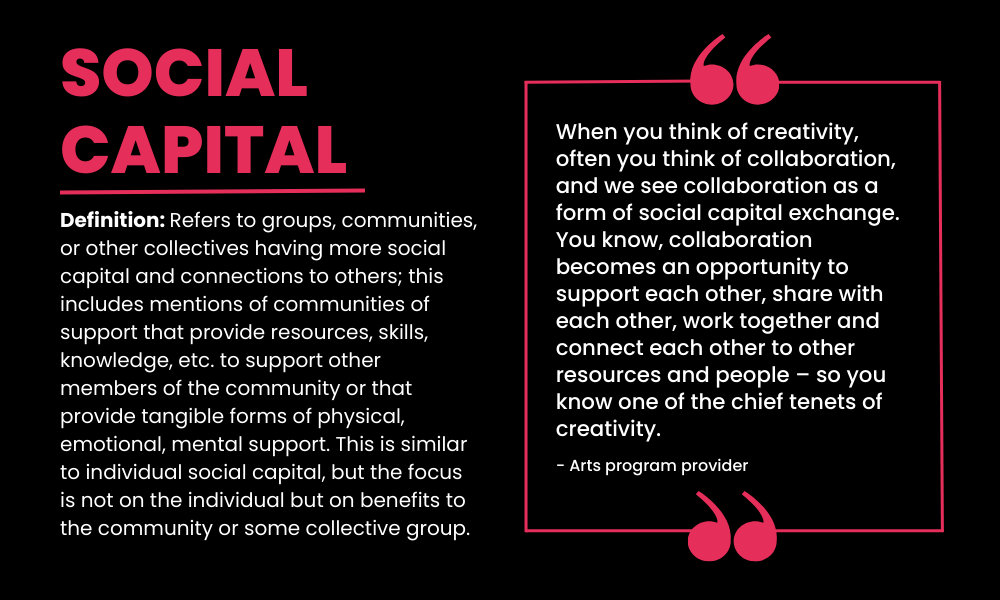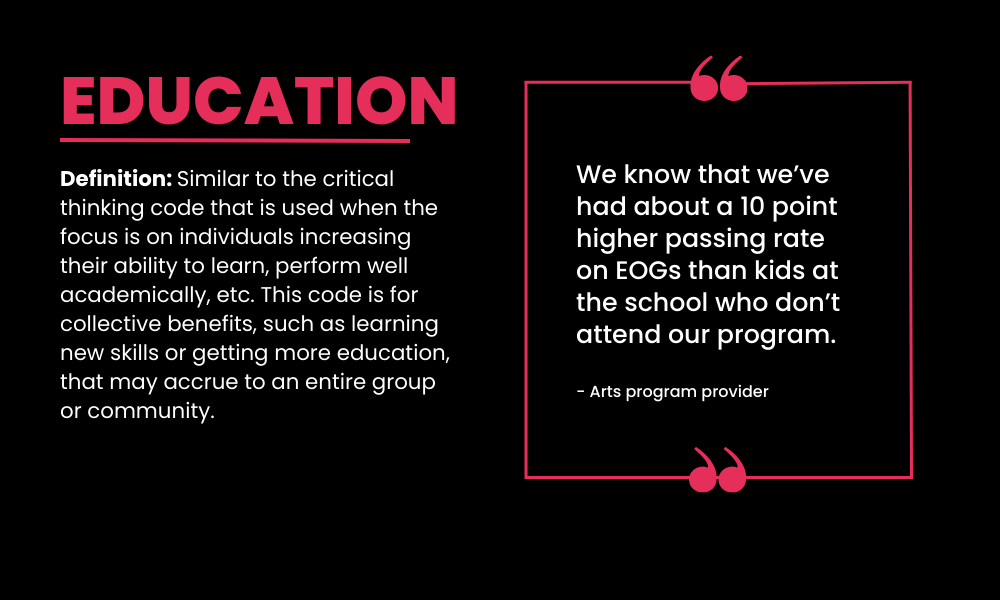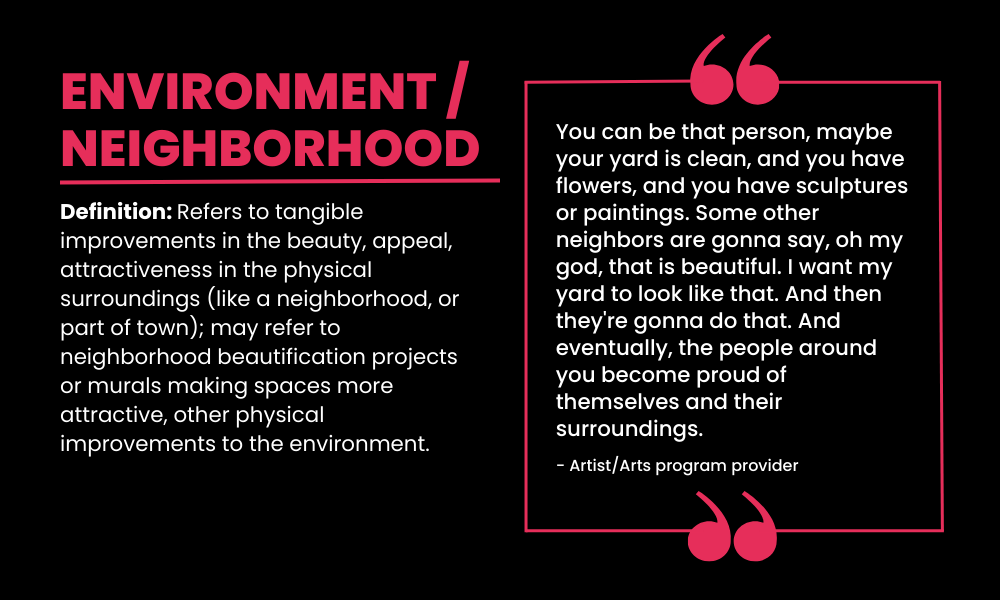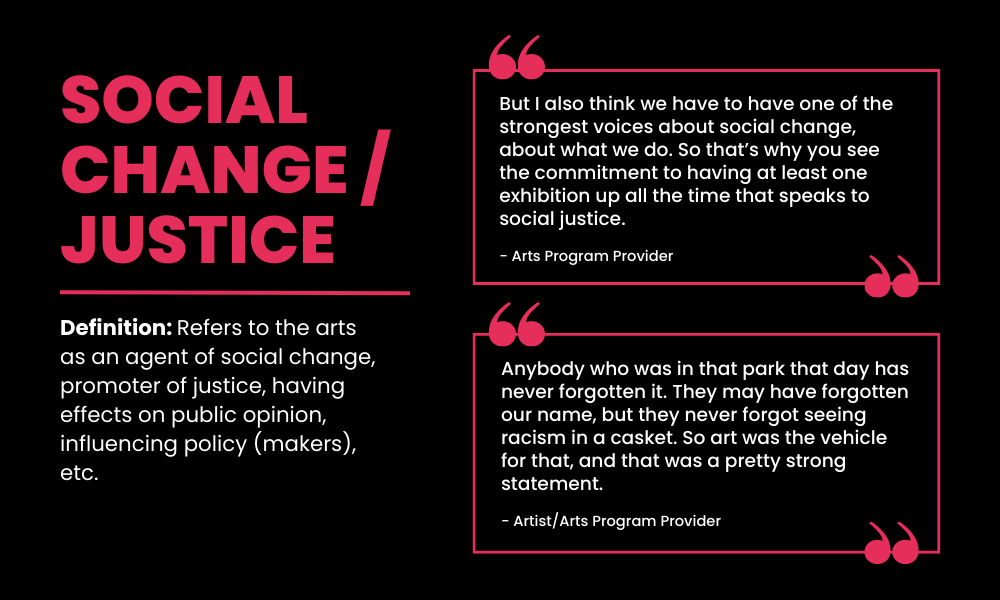
Arts-Based Social Mobility: Exploring cultural capital in Charlotte, NC
Many artists and arts organizations in Charlotte create work and offer programs with the goal of positive social impact.
Arts providers often aspire to increase the cultural capital of participants through arts education, community-based cultural events, creative placemaking, and other types of arts-based experiences.
Based on semi-structured interviews, this research – funded by a National Endowment for the Arts Research Grant and the Gambrell Foundation through a faculty fellowship program – explores how local artists and organizations conceptualize and assess the social impact of the arts, what motivates participation in those activities, and how both providers and participants describe the experiences. This project builds on efforts to document the individuals and organizations engaged in arts-based programs with social impact and to enhance the role of the arts in Charlotte’s plans to broaden economic opportunity for its residents.

WHAT IS CULTURAL CAPITAL?
Many arts programs in Charlotte programs aim to broaden access to the arts and increase the cultural capital of individuals and communities.
“Cultural capital” can be defined as cultural knowledge, tastes, and abilities that generate “profits” in the social sphere.
WHY DOES IT MATTER?
A growing body of sociological research demonstrates that cultural capital is positively associated with social mobility. Studies indicate that the advantages of cultural capital include: improved educational outcomes, enhanced social interaction and friendship networks (social capital), and success in the labor market.
Research suggests that cultural capital, like social capital, can promote educational success, college readiness, and social and economic mobility under the right conditions.
RESEARCH QUESTIONS
WHO WE TALKED TO
80 individuals
(Click each image to enlarge)
49 Artists and Arts Providers
31 Arts Participants
WHAT THEY SAID
Those interviewed had wide-ranging beliefs about the benefits of the arts, were highly motivated to share those benefits with others, and had many personal experiences that reinforced their perspectives. In fact, collectively they identified 26 distinct benefits of arts participation.
We grouped benefits into four broad categories along two dimensions. The first dimension distinguishes personal benefits that focus on the individual versus collective benefits that help a group, such as a family, neighborhood, cultural community, or society at large. The second dimension distinguishes between benefits that are relatively material (or tangible), like obtaining employment, doing better in school, etc., and benefits that are relatively ideal (or intangible), such as self-expression or building confidence.
Directions: Click each benefit to read a direct quote from one of our participants relating to that idea.
IDEAL / INTRINSIC BENEFITS
INDIVIDUAL
COLLECTIVE
MATERIAL / PRACTICAL BENEFITS
INDIVIDUAL
COLLECTIVE
For artists and arts program providers, we found a strong emphasis on individual benefits from arts participation relative to collective ones as well as on ideal benefits relative to material ones. (N=Number of mentions).
More than half of artists and arts program providers mentioned social mobility (53.1%) and social capital (51.0%) as tangible benefits of the arts.
THE IMPACT OF RACE/ETHNICITY:
Arts providers of color – Asian, Black, and Latinx providers – more often emphasized collective or material benefits of the arts relative to individual ideal ones. For Asian, Black, and Latinx providers, for every individual ideal benefit they mentioned, they referenced more than two collective or material benefits of the arts. By contrast, the same ratio of collective or material benefits to individual ideal benefits referenced was 1:4 for White arts providers.
For arts participants, on the other hand, we found a strong interest in individual material over individual ideal benefits. Particularly prevalent were references to employment opportunities and social capital. (N=Number of mentions.)


